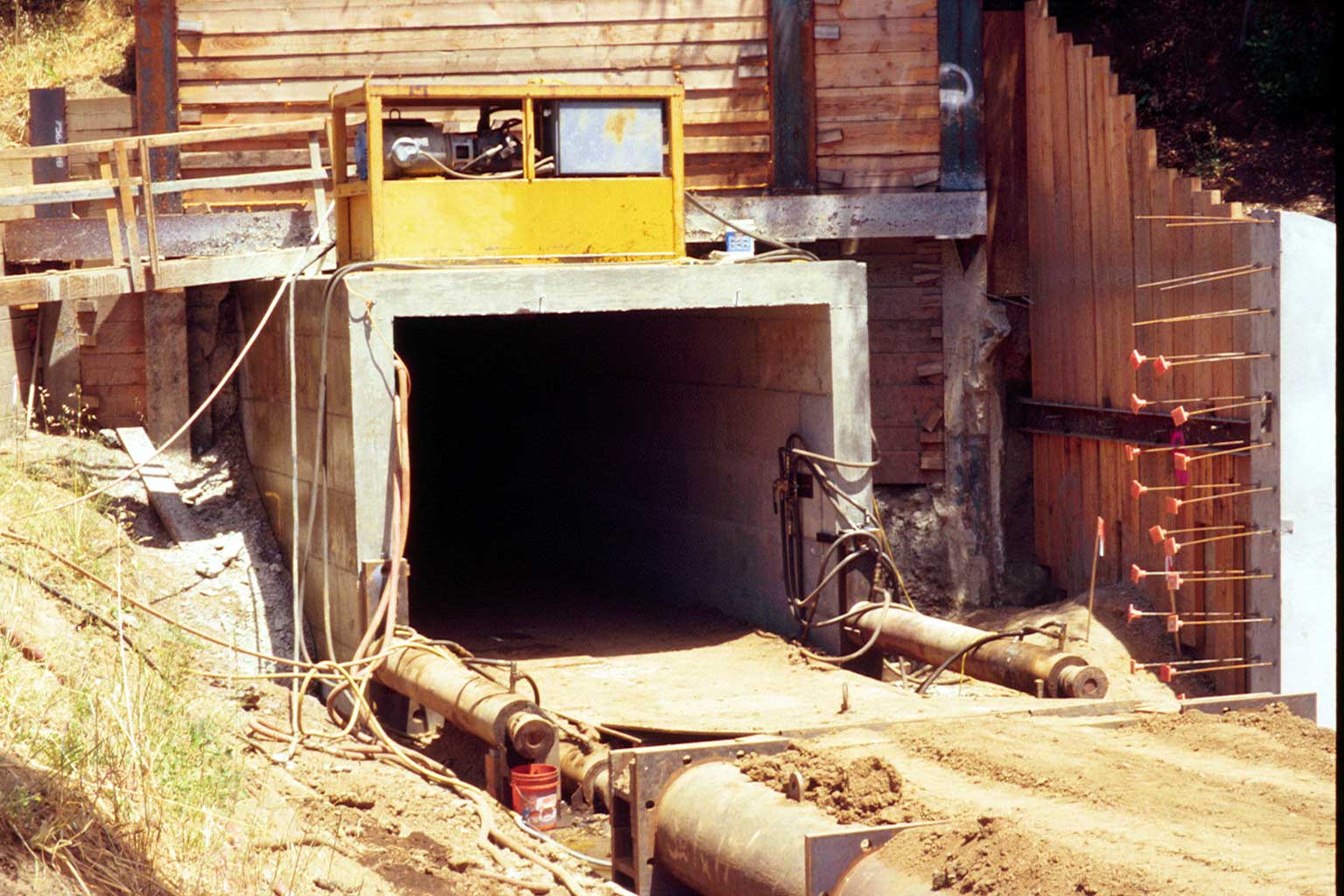
Berkeley Engineering Co., INC.PO Box 7069 General Engineering Contractor
Intranet
|
Box Jacking
Next the launch slab is constructed which will form a guideway for the box. The box is then cast on site using similar techniques to those used for reinforced concrete box culverts. Once the box is cured, jacking begins. This is a sequential process that includes pushing the box, excavating the face and hauling spoils, and extending the thrust members. This process is repeated until the box reaches its final position. The loads that are required to jack the box are dependent on the ground type, the size of the box, the overburden, and the amount of build up allowed to accumulate in the face of the box. Boxes can be jacked through embankments that have a wide range of ground types. The most cost effective arrangement is to have the top of the jacked box well below the road surface. However, it is possible for the box to be only a few feet below the road as was the case on a project we completed for CalTrans in 1998 where the box was 23' wide but only 4' beneath the freeway. In cases where cover is minimal, the box can be jacked across the road or tracks into final position during a brief outage. |
